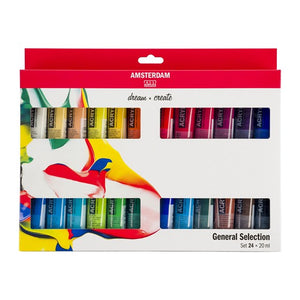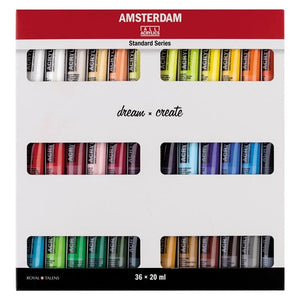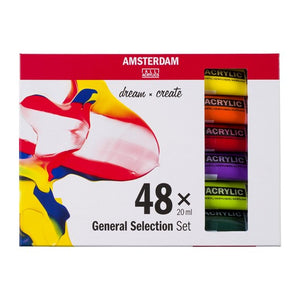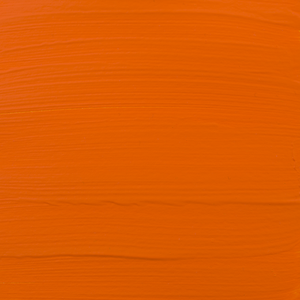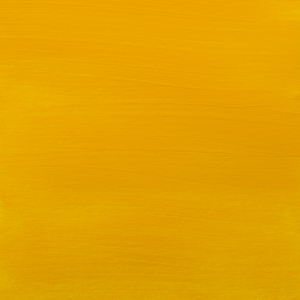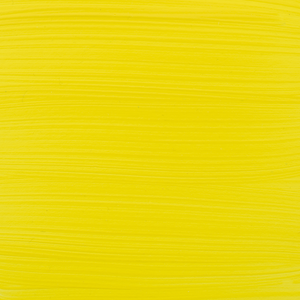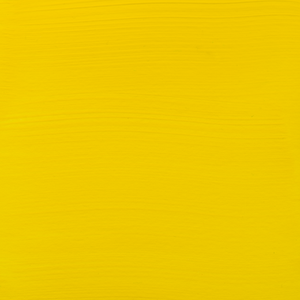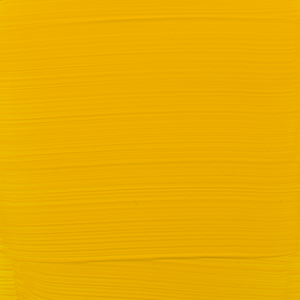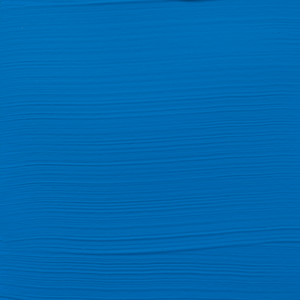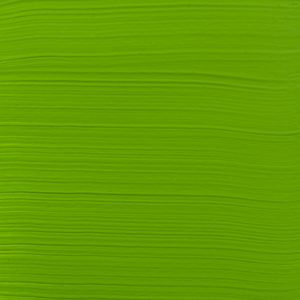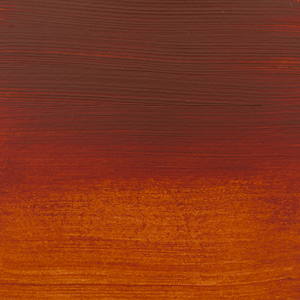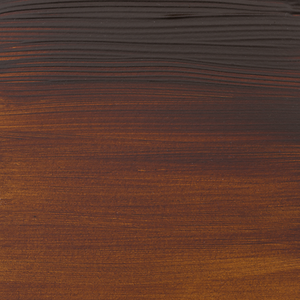- Home
- ACRYLIC PAINT
- AMSTERDAM

Acrylic Paint
There’s no more versatile paint system in the world. Back in 1955, Liquitex was the world's first commercially available water-based acrylic made for artists. News of its huge scope, ease of use and reliable performance quickly spread and now acrylic is the globe's most popular art medium. Water-based acrylic paint is composed of pigment particles dispersed in an acrylic polymer emulsion. There are three main components in any acrylic paint - pigment, binder and vehicle:
Pigment - pigments are granular solids which give paint its color. They are milled to a tiny particle size and do not dissolve but remain suspended in the paint. Pigments can be organic, inorganic, natural and synthetic. They have little or no affinity for the surface to which they are applied.
Binder - a binder is the substance that keeps pigment in place after the paint dries. Acrylic paint has acrylic polymer as its binder, and this forms a film after the water has evaporated.
Vehicle - this refers to the part of the paint that carries the pigment and binder. Water is the vehicle for water-based acrylic and when combined with the binder, it creates a polymer emulsion. Once the water leaves the system via evaporation or absorption, the paint dries, creating a stable clear polymer film full of trapped colored pigment particles.
WHAT MAKES ACRYLICS SO SPECIAL?
Where do we start...
- They dry quickly (10-12 minutes for thin applications, longer for thick applications)
- They flex
- You can clean them up with water when wet
- And they're permanent when dry
- They come in a range of consistencies and formats to suit you
- They stick to almost any surface
- They work across styles and techniques - from experimental applications to traditional painting styles
- They are low odor, with no fumes and are non-flammable
- You can change their character with mediums
DO'S & DON'TS
Thinning
Acrylics should never be thinned with more than 25% water. Why? Too much water will upset the balance and spread the acrylic polymer too thinly so the molecules can't reconnect properly to form a stable film. Instead you should dilute with an acrylic medium, which is essentially the same as the paint but without the color pigment. This way you are adding more of the acrylic/water emulsion to keep the formula and film stable.
Transparency
When wet, an acrylic/water emulsion has a slightly milky appearance and becomes transparent as the paint dries. This milkyness slightly lightens the value of the color. As water leaves the emulsion, and the binder clarifies, the value of the color darkens. This color change is commonly called the wet-to-dry color shift and is most noticeable with dark transparent pigments like alizarin and less noticeable with light opaque pigments like cadmium yellow. Our inhouse chemists are at the forefront of acrylic technology and use the latest acrylic resins available for Liquitex materials, providing you with the best wet clarity possible.
Flexibility
Acrylic paint films aren't keen on the extreme cold, so don't attempt to roll, unroll or flex acrylic paintings in temperatures below 45ºF as they will be more brittle.
Courtesy of Liquitex
ACRYLIC PAINT
Filter Products
BRAND
- AMSTERDAM
- ANGELUS
- Bob Ross
- Chroma
- DecoArt
- Golden
- Grumbacher
- Liquitex
- Posca
- Royal Talens
- WINSOR & NEWTON
COLOR
- AQUAMARINE
- ASSORTED COLORS
- BLACK COLORS
- BLACK-GRAY COLORS
- BRONZE
- BROWN COLORS
- BROWN-EARTH-BUFF COLORS
- BLUE COLORS
- COPPER
- FLUORESCENT
- GRAY COLORS
- GREEN COLORS
- IRIDESCENT-INTERFERENCE COLORS
- LAVENDER
- MAGENTA-VIOLET COLORS
- METALLIC COLORS
- NATURAL COLORS
- ORANGE COLORS
- PINK COLORS
- PURPLE COLORS
- RED COLORS
- SILVER
- VIOLET COLORS
- YELLOW COLORS
- WHITE COLORS
SET
SURFACE TYPE
FORM
- ACRYLICS
- HEAVY BODY ACRYLIC
- BIO-BASED ACRYLICS
- BIO-BASED ACRYLIC MEDIUM
- SOFT BODY ACRYLIC
- LEATHER PAINT
- FABRIC PAINT
- FLUID
- HIGH FLOW
- ACRYLIC INK
- ACRYLIC MARKER
- WATER MARBLING
- COLORED PENCIL
